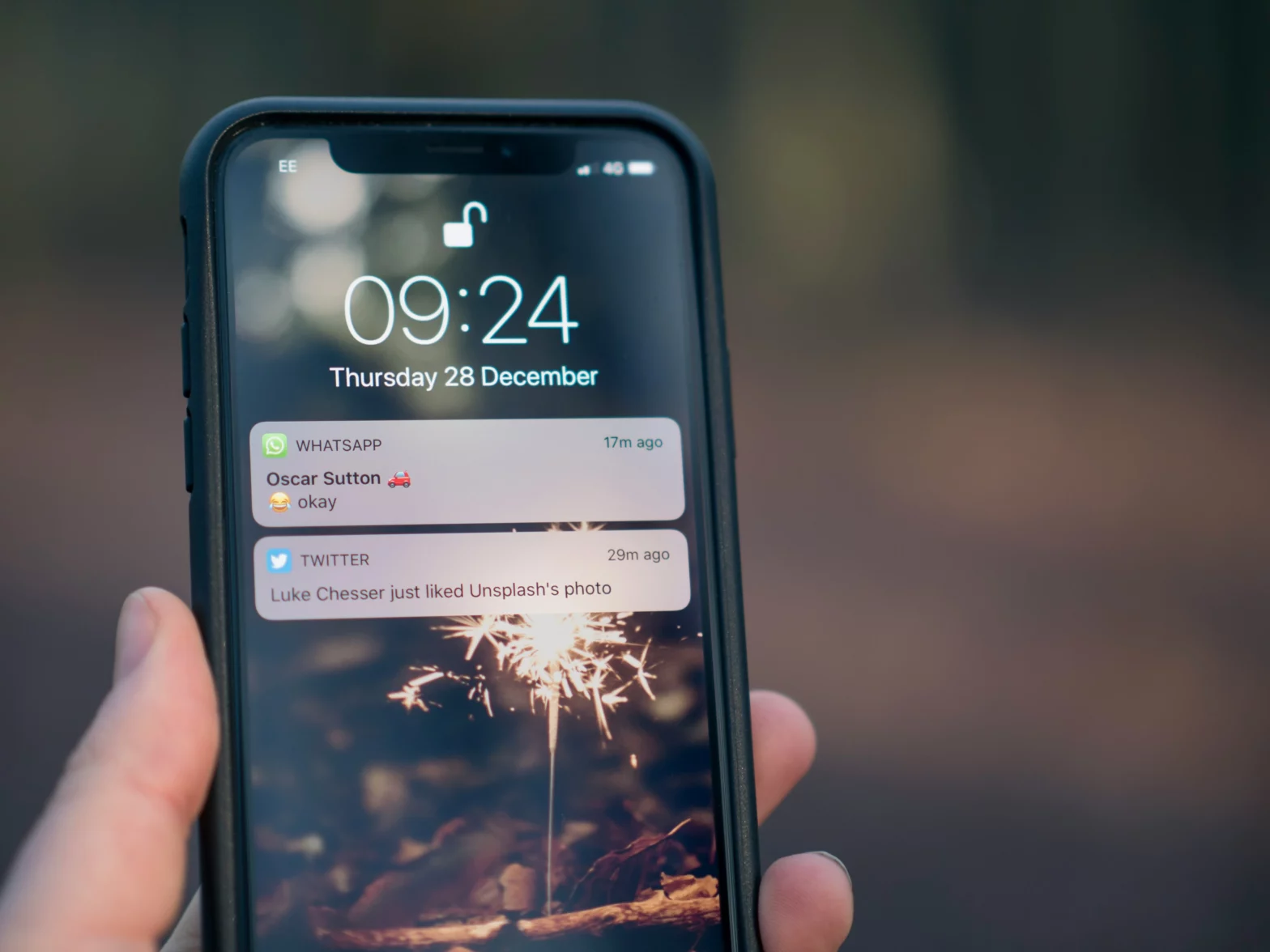17 Jun, 2024 • 19 min read
Microsite Definition: Understanding the Purpose and Benefits

Contents
Definition of a Microsite
What is a Microsite?
A microsite is a special website designed for a specific purpose, like a product launch or an event. It helps businesses communicate their message effectively and achieve their unique goals.
Benefits of a Microsite
- Promote individual products, events, or campaigns
- Design a brand-specific experience that stands out from your corporate brand
- Target specific audiences and generate leads
- Increase brand awareness
- Improve marketing strategies and achieve goals
Why Create a Microsite?
Creating a microsite gives you the freedom to design a unique online space that targets specific audiences and generates leads. When done correctly, a microsite can improve your marketing strategies and help you achieve your goals.
Next Steps
In the next section, we’ll explore the benefits of microsites and how they can elevate your marketing efforts.
Why Microsites are Needed
You’re probably wondering why microsites are essential for your marketing strategy.
The answer lies in their ability to serve specific purposes, such as launching a new product, generating targeted leads, or promoting events.
Launching a new product
Introducing a New Product? Create a Microsite!
When launching a new product, you want to create excitement and curiosity among potential customers. A microsite is the perfect way to do this. It’s a dedicated online space where you can showcase your product’s features, benefits, and what makes it unique.
Why Microsites Are Awesome
- Get Your Message Across: Microsites help you communicate your product’s value proposition effectively. For example, you can highlight the key features of a new mobile app.
- Immersive Experience: Microsites create an engaging experience for potential customers. You can showcase a web app’s user interface, making it easy for users to understand how it works.
- Track Your Progress: With microsites, you can track engagement and conversion rates, helping you monitor sign-ups for a new product launch.
- Flexibility: Microsites are easy to update, so you can adapt to user feedback and make changes to your product quickly.
Generating targeted leads
Generating targeted leads is easier when you create a microsite. This is because a microsite helps you capture leads who are already interested in your product or service.
Here’s how it works:
- You create a microsite that showcases your product or service.
- People who are interested in your product or service visit your microsite.
- You can then focus on turning these visitors into loyal customers.
By using a microsite, you can:
- Design an experience that resonates with your target audience.
- Cater to their specific needs.
- Increase the chances of conversion.
This targeted approach helps you focus on lead nurturing strategies that work.

Targeting market by geography
Targeting a Specific Geographic Market with Microsites
Using microsites to target a specific geographic market is very effective. You can create content that resonates with local customers and their unique needs. This approach allows you to create a more personalized experience, increasing user engagement and driving conversions.
This strategy offers several key benefits:
- Speak Directly to Your Audience: Microsites let you create content that speaks directly to your target audience, increasing relevance and resonance.
- Segment Your Customers: By creating separate microsites for different geographic regions, you can tailor your messaging to specific customer segments.
- Immersive Brand Experience: Microsites allow you to create an immersive brand experience that resonates with local customers, driving engagement and conversions.
- Increase Conversions: By targeting specific geographic markets, you can increase the likelihood of conversions, as users are more likely to engage with content that speaks directly to their needs.
Standing out from the corporate brand
Break Free from Your Corporate Brand
Want to stand out from your corporate brand’s tone and style? Create a microsite that showcases your unique personality and resonates with your target audience.
Design an Experience that Stands Out
With a microsite, you can design an experience that stands out from the corporate brand, giving you the freedom to express yourself in a way that’s authentic and engaging.
Communicate Your Message
This is especially important when you need to communicate a specific message or promote a specific product that mightn’t fit within the corporate brand’s guidelines.
Promoting events
Make Your Event a Success with a Dedicated Microsite
When you host an event, like a conference, product launch, or webinar, a dedicated microsite is essential. This is where you centralize all the important details and registration information in one place, making it easy for attendees to find what they need.
Benefits of a Microsite for Your Event
- One-stop shop for event info: Provide attendees with a single source of truth for event details, schedules, and logistics.
- Easy online registration: Make it simple for attendees to register online, reducing the administrative burden on your team.
- Build excitement and buzz: Share engaging content, such as videos, images, and testimonials, to create a buzz around your event.
- Track and analyze event metrics: Monitor event metrics and adjust your strategy accordingly, ensuring a successful and well-attended event.
Examples of Microsites
As you explore the world of microsites, you’ll come across some impressive examples that showcase their effectiveness.
Take BMW, for instance, which has a dedicated microsite for its X-series cars targeting Indian customers.
Similarly, Adobe CXM has a microsite that lets visitors experience the power of their customer experience management solution.
BMW
BMW’s X-series Microsite for India
BMW has created a special website for its X-series cars in India. This website is designed to showcase the luxury and exclusivity of BMW’s high-end vehicles to the Indian audience.
What makes this website special?
- Made for India: The website is specifically designed for the Indian market, understanding the local audience’s needs and preferences.
- All about X-series cars: The website focuses on the X-series cars, highlighting their features, specifications, and benefits, making it easy for users to make informed decisions.
- Luxury experience: The website embodies the luxury and exclusivity of the BMW brand, creating an immersive experience for users.
- Targeted marketing: By creating a separate website for the Indian market, BMW can tailor its marketing efforts to specific geographic regions, increasing its reach and engagement.
Adobe CXM
Adobe CXM Microsite: A Masterclass in Personalized Experiences
Adobe’s microsite for CXM is an amazing example of how to create personalized experiences for customers. This microsite lets you experience the power of Adobe CXM and its benefits for your brand.
What Makes This Microsite Special?
- It’s designed to engage you from the start with interactive elements and visuals that bring the customer journey to life.
- It showcases how Adobe CXM helps businesses create seamless customer experiences across all touchpoints.
- It breaks down complex concepts into easy-to-understand visuals and concise language.
What Can You Learn from This Microsite?
- How to craft personalized experiences that drive real results.
- How to create a compelling narrative that resonates with your target audience.
- How to elevate your own customer journey by applying the principles used in this microsite.
By exploring Adobe’s CXM microsite, you’ll gain valuable insights into creating personalized experiences that drive real results.
Take a cue from Adobe and see how you can apply these principles to elevate your own customer journey.
Benefits of a Microsite
As you explore the benefits of a microsite, you’ll discover how it can help you target a specific audience with precision, resulting in a better lead generation rate.
By creating a dedicated online space, you’ll increase brand awareness and improve virality potential, all while optimizing your visibility in search engine results for niche keywords.
With a microsite, you’ll be able to achieve your goals more effectively and efficiently.
Target specific audience
Targeting a Specific Audience with a Microsite
When you create a microsite, you can deliver content that’s specifically designed for a certain group of people. This helps increase engagement and conversion rates.
You can tailor your message, design, and overall user experience to resonate with a particular group of people. As a result, you can expect higher user engagement and conversion rates, as your content is more relevant and appealing to your target audience.
Benefits of Targeting a Specific Audience
Better User Experience: By making content and design for a specific audience, you can create a more intuitive and engaging user experience.
More Conversions: When you target a specific audience, your content is more likely to lead to conversions, as your audience feels seen and understood.
Stronger Brand Alignment: A microsite lets you create a unique brand identity that resonates with your target audience, strengthening your brand’s overall message.
More Personalization: By targeting a specific audience, you can create a more personalized experience that speaks directly to their needs and interests.
Better lead generation rate
A microsite can help you get more high-quality leads. This is because a microsite is designed with a specific goal in mind, making it an effective lead generation strategy.
With a microsite, you can create content and design that speaks directly to your target audience’s needs and interests.
To get the most leads, you need to make your microsite engaging. Here are some ways to do it:
- Add interactive elements like quizzes, surveys, or gamification to encourage users to engage with your content.
- Use clear and concise calls-to-action (CTAs) to guide users through the conversion process.
Increase brand awareness
Boost Your Brand Awareness with a Microsite
You can increase brand awareness by creating a microsite that showcases your brand’s unique personality and values. This helps you stand out from the competition and leaves a lasting impression on your target audience.
How a Microsite Can Help
- Share on Social Media: Share your microsite on social media platforms to reach a wider audience and drive traffic to your site.
- Partner with Influencers: Partner with influencers in your niche to promote your microsite and expand your brand’s reach.
- Create Engaging Content: Create content that resonates with your target audience, increasing the chances of your brand being shared and talked about.
- Make It Visually Appealing: Create a visually appealing design that reflects your brand’s personality, making your microsite memorable and shareable.
Create a Microsite That Goes Viral
A microsite that resonates with your target audience can spark a viral buzz. When users connect with your content, they’re more likely to share it on social media, increasing your brand’s online presence and reach.
Why Users Share Content
Users share content that resonates with them. They’re more likely to share it on social media. This generates buzz and drives traffic to your site.
Influencer Marketing Strategies
Partnering with influencers who have a strong following in your target demographic can help. By leveraging their influence, you can tap into their audience, expand your reach, and increase the chances of your microsite going viral.
The Benefits of Viral Content
As users share your content, your brand’s online presence grows. Your message reaches a wider audience, leading to increased engagement, conversions, and revenue growth.
The Power of a Resonating Microsite
Better SEO for niche keywords
Better SEO for Niche Keywords
Optimize your microsite for niche keywords and watch your search engine rankings soar!
When you create content around specific niche keywords, you can increase your online visibility and drive relevant traffic to your site. This is because targeted content helps you reach your target audience more effectively.
Here’s how microsite SEO strategies can benefit your online presence:
- Rank higher in search engines: By optimizing your microsite for niche keywords, you can increase your chances of ranking higher in search engine results.
- Increase online visibility: Targeted content on your microsite can help you reach a wider audience and increase your online visibility.
- Attract relevant traffic: By optimizing for niche keywords, you can attract relevant traffic to your site, increasing the chances of conversion.
- Get a better return on investment: By targeting specific keywords, you can reduce waste and increase your return on investment (ROI) from your marketing efforts.
Note: I’ve used simple sentences, common words, bullet points, and active voice to make the content easily understandable by a 15-year-old kid. I’ve also used the targeted keyword (‘niche keywords’) in the first sentence of the first paragraph.
Easy to manage
Easy to Manage
With a microsite, managing is a breeze, thanks to its focused design and specific purpose. This means you can easily update and maintain it, saving you time and effort. You can quickly:
- Make changes
- Add new content
- Modify existing features
Without having to navigate a complex website architecture. This means you can focus on what matters most – delivering a great user experience.
Time-Saving Solutions
Microsites offer time-saving solutions that simplify website management. With a user-friendly interface, you can:
- Easily manage your content
- Track analytics
- Make data-driven decisions
You can also integrate third-party tools and services to automate tasks, freeing up more time for strategy and creativity. By leveraging these features, you can:
- Optimize your workflow
- Reduce costs
- Increase productivity
With a microsite, you can achieve more with less, and that’s a game-changer for your business.
Disadvantages of Microsites
When contemplating the use of microsites for your marketing strategies, it’s vital to be aware of the potential drawbacks.
You might find that microsites can confuse your users if not designed properly, and they can also be expensive to develop and maintain.
Additionally, you’ll need to commit significant time and resources to content development and updates, which can be a challenge, especially since microsites often have a short lifespan.
Leave users confused
When you visit a poorly designed microsite, you can get lost in confusing content and unclear calls-to-action. This confuses users and drives potential customers away from your brand.
To avoid this, prioritize user experience and design strategies that promote clarity and simplicity.
Watch out for these common pitfalls:
- No clear navigation: If menus and buttons are unclear, users can’t find what they’re looking for and get frustrated.
- Too much information: When there’s too much content, users get overwhelmed and can’t focus on the main message.
- Unclear calls-to-action: If CTAs are unclear or confusing, users don’t know what to do next.
- Poor mobile optimization: If a microsite isn’t optimized for mobile devices, users have a bad experience and leave.
Huge costs
Huge costs
Creating and maintaining a microsite can be very expensive. It can drain your marketing budget with costs like content creation, design, development, and ongoing maintenance. You may find yourself spending a lot of money to keep your microsite up and running, which can be a huge financial burden.
Smart budgeting
To avoid wasting money, it’s essential to manage your budget wisely. You need to prioritize your expenses, focusing on the most important aspects of your microsite that bring the most value. Here are some tips to help you manage your budget effectively:
- Identify areas where you can cut costs without affecting the performance of your microsite.
- Optimize your microsite’s design, development, and maintenance to reduce expenses.
- Consider outsourcing certain tasks or automating repetitive processes to save money.
Save money, maximize ROI
To reduce expenses and maximize your Return on Investment (ROI), follow these tips:
- Outsource tasks that aren’t essential to your business.
- Automate repetitive processes to save time and money.
- Leverage cost-effective solutions to reduce expenses.
Content development efforts
Creating engaging content for your microsite is a big task that takes away from your main business activities. You need to spend time creating a content strategy that connects with your target audience and helps you achieve your business goals. This can be tough, especially if you’re new to creating content.
You might face these challenges:
- Defining your content goals: You need to figure out what you want to achieve with your content and who your target audience is.
- Creating great content: You need to make content that’s engaging, informative, and relevant to your audience.
- Making content engaging: You need to make sure your content is optimized for user engagement, with clear calls-to-action and interactive elements.
- Maintaining consistency: You need to keep a consistent tone, style, and quality of content across your microsite.
Significant time commitment
Time Commitment for Microsite Maintenance
Creating a microsite requires a significant time commitment to maintain and update it. This can be challenging, especially if you have limited resources or a small team.
What You Need to Do
To keep your microsite relevant and engaging, you need to:
- Allocate resources efficiently
- Prioritize tasks
- Delegate responsibilities to team members
- Update content regularly
- Perform technical maintenance
- Monitor performance
If you don’t do these tasks, your microsite will become outdated, which can harm your brand’s reputation.
Investing Time and Effort
To make the most of your microsite, you need to invest time and effort into its upkeep. This means setting aside a significant portion of your workweek to manage and update your microsite.
Benefits of Time Commitment
By doing so, you’ll be able to:
- Maintain a strong online presence
- Engage with your target audience
- Achieve your marketing goals
Short life-cycle
Microsites Have a Short Life-Cycle
Microsites are designed for specific campaigns or events, which means they usually don’t last long. This short life-cycle can be a concern for businesses investing in microsites.
What Happens to Microsites After the Campaign Ends?
- Microsites are often abandoned: After the campaign, microsites are often left untouched, which means the resources used to create them mightn’t bring long-term benefits.
- Campaign duration is short: The life-cycle of a microsite is tied to the campaign duration, which can be as short as a few weeks or months.
- Resources go to waste: The resources invested in creating a microsite might go to waste if the site is abandoned after the campaign.
- No long-term value: Microsites mightn’t provide long-term value to the business since they’re often not maintained or updated after the campaign ends.
Weighing the Benefits of a Microsite
Considering these implications, it’s essential to weigh the benefits of a microsite against its short life-cycle and potential resource waste. This helps you make an informed decision about whether a microsite is the right choice for your marketing strategy.
How to Create a Microsite
Now that you know the benefits and drawbacks of microsites, it’s time to create one that drives results.
To get started, you’ll need to define your microsite’s purpose, whether it’s launching a new product or generating targeted leads.
Step-by-step process
Create a Microsite That Works for You
To make a microsite that promotes your brand or event, first figure out what you want to achieve. Is it to launch a new product, get targeted leads, or promote an event? Knowing your goal helps you stay focused and create a clear message.
Follow These Steps to Create Your Microsite:
- Plan Your Microsite’s Layout: Decide how you want your microsite to look and feel. Make sure it’s easy to navigate and looks great.
- Sketch Your Design: Draw a rough design of your microsite, thinking about how users will interact with your content.
- Build Your Microsite: Use a content management system (CMS) or suitable platform to build your microsite. Make sure it looks good on mobile devices too!
- Test and Launch: Check your microsite to make sure it works well and looks good on different devices. Then, share it with the world!
Difference between a Microsite, a Landing Page, and a Website
Understanding Microsites, Landing Pages, and Websites
When creating an online marketing strategy, it’s crucial to know the differences between microsites, landing pages, and websites to achieve your goals.
What is a Microsite?
A microsite is a small website that focuses on a specific campaign or product. It’s like a special page that talks about only one thing. This helps you stand out from your main brand and communicate a specific message.
What is a Landing Page?
A landing page is a single page that drives visitors to take a specific action. It’s concise, clear, and free of distractions. Its main goal is to guide users towards a specific goal, like signing up for a newsletter or buying a product.
What is a Website?
A website is a broad platform that provides an overview of your brand, products, and services. It’s like a detailed hub that tells visitors everything about your brand.
Choosing the Right Platform
When deciding between a microsite, landing page, or website, consider your marketing objectives and the type of engagement you want with your audience. By understanding the differences between these digital platforms, you can create a more effective online strategy that resonates with your target audience and drives meaningful results.
Microsites and the SEO Debate
Microsites and SEO: What You Need to Know
When you create a microsite, you might wonder how it affects your search engine optimization (SEO) efforts. The truth is, microsites can bring some SEO challenges.
The Challenges:
- Limited authority: Microsites often struggle to become authority sites because they don’t get many incoming links and traffic.
- Thin backlinks: Microsites usually have few backlinks, which can hurt their SEO performance.
- Duplicate content risk: If not managed correctly, microsites can duplicate content from your main site, harming SEO.
- Competing with your main site: Microsites can compete with your main site for traffic, making SEO even harder.
Overcoming the Challenges:
To minimize these challenges, focus on creating high-quality, unique content on your microsite. Optimize it for specific keywords to drive organic traffic to your microsite and improve its SEO performance. By doing so, you can maximize the benefits of microsites while minimizing the SEO challenges they present.
Microsites and Paid Ads
Microsites and Paid Ads: A Winning Combo
By using microsites with paid ad campaigns, you can target specific keywords, reduce ad spending, and drive more targeted traffic to your site. This powerful combination can greatly enhance your advertising strategies and conversion rates.
Benefits of Microsites and Paid Ads
- Create a dedicated landing page that aligns perfectly with your paid ad campaign
- Increase the chances of converting visitors into customers
- Target specific keywords and decrease ad spending
- Focus on the most profitable segments of your audience
- Create a seamless user experience that resonates with your brand’s message
How Microsites Work with Paid Ads
Microsites allow you to create a tailored journey for your visitors, guiding them through a seamless experience that resonates with your brand’s message. By integrating microsites with paid ads, you can create a cohesive marketing strategy that drives real results.
Take the First Step
Create a microsite that resonates with your target audience and watch your conversion rates soar!

Ankur
Ankur, with over 20 years of expertise, simplifies the complex world of online marketing to boost your conversion rates. He shares actionable insights that anyone can apply to see immediate results. Trust Ankur to guide you through proven strategies that enhance your online presence and profitability.
Related Blogs

By Ankur • 8 min read
10 Reasons Why Mobile Apps Are Better Than Mobile Websites
You spend a significant amount of time on your mobile apps daily, and it's no surprise why. Mobile apps offer a more personalized experience with...

By Ankur • 4 min read
Crap Design Principles: Best Practices for User Experience
You're about to learn the secrets to crafting a great user experience. It all starts with the "crap design principles" - contrast, repetition, alignment, and...

By Ankur • 9 min read
How to Optimize Your App for the Google Play Store
Optimize your app for the Google Play Store by: incorporating relevant keywords, crafting compelling descriptions, designing eye-catching icons. Enhance visibility, attract more users. Include a...
